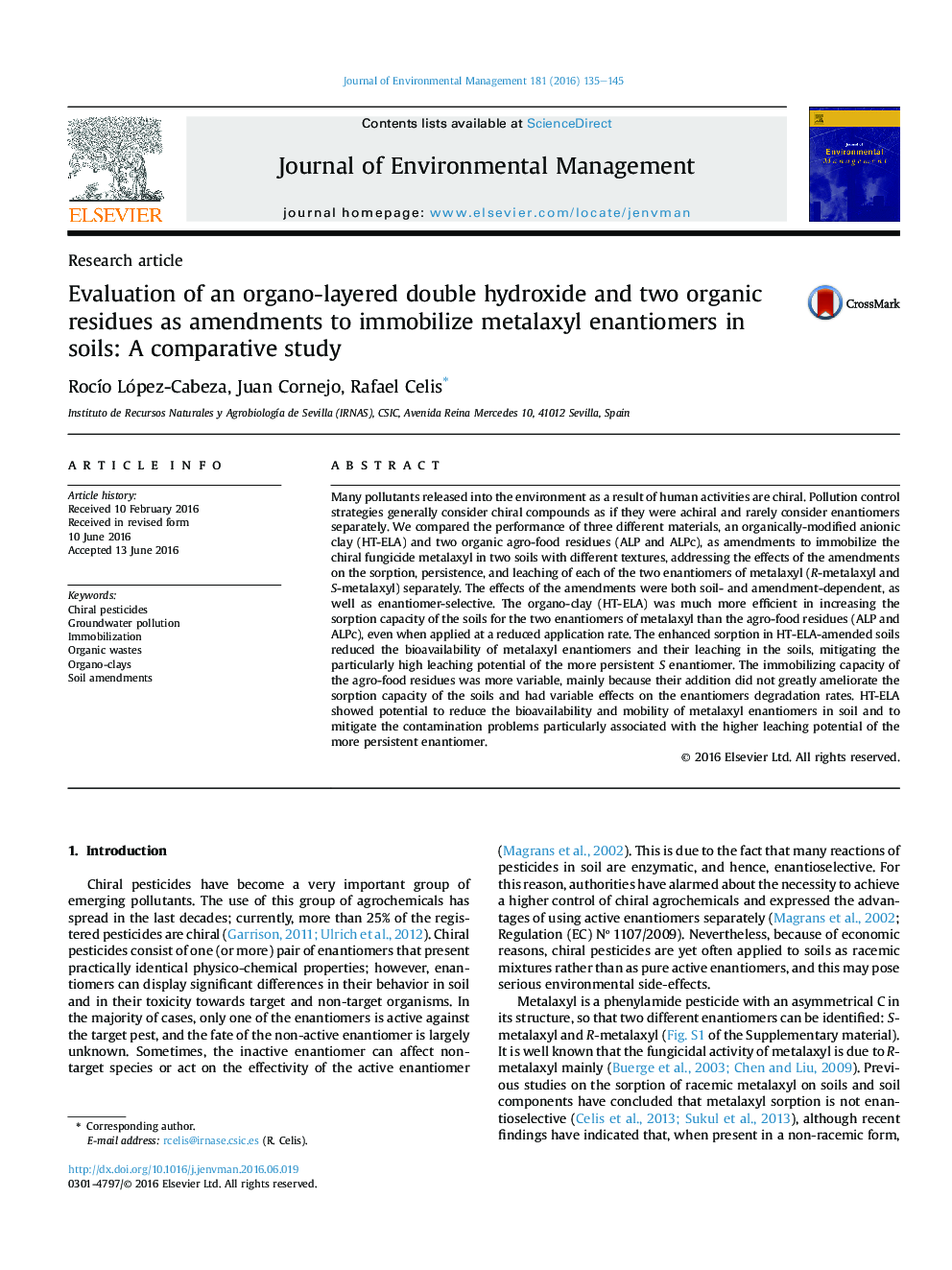| Article ID | Journal | Published Year | Pages | File Type |
|---|---|---|---|---|
| 7479466 | Journal of Environmental Management | 2016 | 11 Pages |
Abstract
Many pollutants released into the environment as a result of human activities are chiral. Pollution control strategies generally consider chiral compounds as if they were achiral and rarely consider enantiomers separately. We compared the performance of three different materials, an organically-modified anionic clay (HT-ELA) and two organic agro-food residues (ALP and ALPc), as amendments to immobilize the chiral fungicide metalaxyl in two soils with different textures, addressing the effects of the amendments on the sorption, persistence, and leaching of each of the two enantiomers of metalaxyl (R-metalaxyl and S-metalaxyl) separately. The effects of the amendments were both soil- and amendment-dependent, as well as enantiomer-selective. The organo-clay (HT-ELA) was much more efficient in increasing the sorption capacity of the soils for the two enantiomers of metalaxyl than the agro-food residues (ALP and ALPc), even when applied at a reduced application rate. The enhanced sorption in HT-ELA-amended soils reduced the bioavailability of metalaxyl enantiomers and their leaching in the soils, mitigating the particularly high leaching potential of the more persistent S enantiomer. The immobilizing capacity of the agro-food residues was more variable, mainly because their addition did not greatly ameliorate the sorption capacity of the soils and had variable effects on the enantiomers degradation rates. HT-ELA showed potential to reduce the bioavailability and mobility of metalaxyl enantiomers in soil and to mitigate the contamination problems particularly associated with the higher leaching potential of the more persistent enantiomer.
Keywords
Related Topics
Physical Sciences and Engineering
Energy
Renewable Energy, Sustainability and the Environment
Authors
RocÃo López-Cabeza, Juan Cornejo, Rafael Celis,
